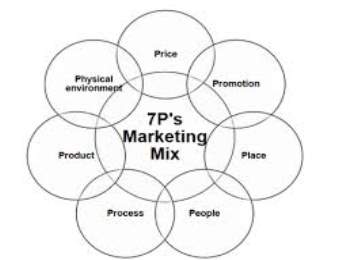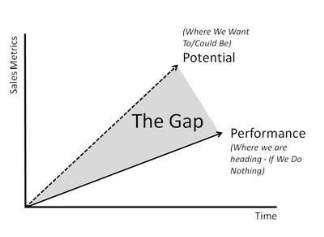Differences between Relationship Marketing and Transaction Marketing
| ✅ Paper Type: Free Essay | ✅ Subject: Marketing |
| ✅ Wordcount: 1541 words | ✅ Published: 23 Sep 2019 |
Topic: Using a range of current marketing theory, you are required to outline what ‘relationship marketing’ (RM) is, and how it differs from ‘transaction marketing’ (TM).
Table of Contents
1.0 Introduction…………………………………………………………………………………3
1.1 Four actions framework…………………………………………………………………………………………….3
1.2 Relationship Marketing versus Transaction Marketing………………………………………………….4
1.3 The Marketing Mix…………………………………………………………………………5
1.4 The Product life cycle……………………………………………………………………………………………….7
1.5 Gap Analysis……………………………………………………………………………………………………………8
1.6 A shift from transactional to relationship marketing……………………………………………………..8
Conclusion……………………………………………………………………………………………………………………9
1.0 INTRODUCTION
Marketing in the new millennium has evolved with a host of new ideas and changes. The synthesis of these ideas, changes and transformations culminated in finer segmentation of customers, deeper insight into their likes and dislikes, greater emphasis on value added products and services, innovative strategies for retention and application of technology to facilitate these processes. The concept of relationship marketing transpired out of this metamorphosis. (Kotler & Keller, 2008).
Biswas (2011) clarifies a comprehension of RM as the continuous way of participating in agreeable exercises, programs with prompt clients aimed at improving mutual economic value at decreased cost
Gummersson (2008) characterize RM as marketing dependent on interactions within relationships that can develop into immensely complex way, while Buttle (1994) deduce RM as all marketing exercises coordinated to setting up, creating and keeping up effective relational exchanges.
1.1 Four actions framework
This framework distinguishes components of the organization that ought to be changed to enhance organization’s tasks and increase consumer loyalty thus its marketing ought to be expanded to draw consideration of present and potential clients while planning techniques that will assist them with achieving customer relationship
The job of relationship marketing in business has progressed toward becoming as huge as keeping up great relationships with different segments of society, particularly clients, and this makes room for accomplishing the goals of a company (Biswas, 2011).
(Buttle, 1996) contends that RM has been seen as the future, or even the current New Paradigm of marketing. It has been invited as “saving the negative effect of traditional marketing or marketing-mix theory” (Grönroos, 1994)
Transactional marketing focuses on point of sale contact as it underlines on increasing the effectiveness and volume of individual deals as opposed to building up a relationship with the consumer.
While all marketing spotlights on picking up customers and expanding benefits, relationship marketing and transactional marketing take distinctive perspectives of the customer’s role. The transactional approach sees the customer exclusively as a vehicle for sales, while relationship marketing builds up a relationship with the individual responsible for the sale. (Kotler & Keller, 2008).
1.2 Relationship Marketing versus Transaction Marketing
RM and TM are not mutually exclusive and there is no need for conflict between them, however one approach may be more suitable in some situations than in others. TM is most appropriate when marketing relatively low value consumer products, when the product is a commodity and switching costs are low while RM is more appropriate. Therefore most firma should be able to blend the two approaches to match their portfolio of products and services (Biswas, 2011).
As per Gummesson (2008), “RM is frequently introduced as opposite of transaction marketing, the one-shot arrangement. In RM the loyalty of customers is stressed while exchange marketing has no desire to climb the ladder of loyalty.
Taking a look at the business-to-business (B2B) and business-to-buyer B2C), business clients normally aspire to associate with the seller which makes it troublesome for an individual customer to manufacture a genuine relationship with the vendor. (Biswas, 2011). Since B2B marketing frequently includes large volumes of purchases, it makes it plausible for the seller to contribute a good amount of resources towards the product and service and this then makes the consumer eager to participate in fashioning a genuine relationship whilst businesses battle to distinguish the genuine advantage that clients will get from focusing on a long haul relationship.
Transaction marketing can be viewed as the zero point of the RM scale and the extent of the relationships can be improved until a client and a provider have similar association
1.3 The Marketing Mix
Transactional marketing and the 4Ps concept were developed as a basic framework for marketing of products. This period saw companies attaining an optimal combination of goods and services offering, price, promotion and distribution in order to attract and satisfy customers. The consumers were viewed as passive; they were limited to accepting or rejecting this combination of the 4Ps, and to buying or refusing the offer (Kotler et al, 2008) supports this view and posits that during the transactional marketing era, the customer’s purchasing behavior was influenced through various marketing tools, and products were aimed at relatively passive customers. Thus, transactional marketing was a business strategy that focused on single sales trans-actions and not creating a lasting relationship with the customer. This marketing practice has given way to relationship marketing (RM), a new school of thought, which is a strategic marketing instrument used to acquire customers, build close long-term relationships, and retain them to acquire competitive ad-vantage (Armstrong, Gary & Kotler, Philip (2005).
The initial 4Ps – price, product, place and promotion have more focus on transaction marketing and relationship marketing makes it possible for the extended Marketing Mix to include products that are services and not just physical things which are people, process and physical evidence.(Kotler, 2008).
While TM is driven by the 4Ps of the marketing mix- price, product, place and promotion, the 4Ps of RM are supplemented with another 3Ps- people, process and physical evidence to facilitate one to one transactions and also get used to this marketing mix and customers’ expectations in a constantly changing commercial environment.

Figure 1: The Marketing mix (Kotler et al, 2008)
1.4 Product Life Cycle
This theory affirms how marketing systems develop alongside a product from origin through outdated nature therefore organizations should take great care in ensuring that their marketing mix heightens the interest of potential clients in the early stage of their goods (Bradley, 2008). Whilst developing the market for their product offerings, it makes fragile players phase out, and this leads to little differentiation among its rivals.
Here, TM has a defined life cycle that concludes with sale, while RM has a continued life cycle after sales, and gives room for a continuous exploration of future requirements and ways to address them in the product life cycle.
1.5 GAP ANALYSIS
Gap analysis is an exceptionally valuable device because it helps managers make a great choice on procedures and strategies to engage in. Gap Analysis is a vital system utilized by the executives to recognize the organization’s position and its capabilities. Fundamentally, Gap analysis places a contrast on the real accomplishment and the potential one with the aim at discovering the hole in the current technique. Numerous reasons exist inside an organizations system with greater part of these reasons being a direct result of the changes in the condition of the business. This theory can likewise propose systems which enhance the usage of assets to give the most ideal outcomes. (Czinkota, M. and Kotabe, M, 2004)

1.6 A shift from transactional to relationship marketing
According to Bradley (2008), transactional marketing is a marketing pattern broadly utilized to start with amidst the twentieth century and is a technique that centers around a trade of goods between individuals. Here, organizations don’t plan to keep clients for long periods even though their activities are meant to gain clients and handle transactions.
Despite the fact that the primary drawback of the relationship marketing is its costly approach, cultivating progressing interaction with purchasers through Customer Relationship Management systems commonly enhances Return On Investment (ROI) over the long haul.
CONCLUSION
The possibility of a marketing mix is to sort out all parts of the marketing plan to suit the wants and desires of the company’s niche market. Essentially put, the Marketing Mix is a device utilized by organizations to aid in determining the offerings of a product.
A marketing plan is very vital because it allows for easy entrance and development. The previously mentioned components give dependable data and chance to advertisers and the organizations. The four P’s and related components can be utilized to mount and propel a focused market development condition given the specialty of the marketer.
REFERENCES
- Armstrong, Gary & Kotler, Philip (2005) Marketing: An Introduction Upper Saddle River, 7th Edition. N.J. Prentice Hall,
- Gummesson, Evert, (1995) “Relationship Marketing: Its Role in the Service Economy,” Understanding Services Management, William J. Glynn and James G. Barnes, eds. New York: John Wiley & Sons.
- Buttle, F. (1996), Relationship Marketing-Theory and Practice. London : Paul Chapman Publishing Ltd. SAGE Publications Company
- Gummesson, Evert.(2008) Total Relationship Marketing. Elsevier Ltd.
- Gonroos, C (1994), From Marketing Mix To Relationship Marketing: Towards a Paradigm Shift in Marketing.
- Czinkota, M. and Kotabe, M (2004) Marketing Management. Atomic Dog Publishing,
- Kotler, P. and Keller, K. L., (2008).A Framework for Marketing Management. 4th ed. New Jersey: Pearson Prentice Hall.
- Frank Bradley(2008). International Marketing Strategy.5th Edition. Pearson Education Ltd
- Kotler,P& Keller, K.L.(2012)Marketing Management. 14th Edition, Pearson Education Limited
- Malhotra, N. K., (2010). Marketing Research: An Applied Orientation. 6th ed. New Jersey: Pearson Prentice Hall.
- Dann, S. & Dann. S. (2011). E-Marketing: Theory and Application. London, U.K: Palgrave Macmillan
- Supriya Biswas (2014). Relationship Marketing; concept, theories and cases. 2nd edition.
- Supriya Biswas (2011), Relationship Marketing, Concepts, Theories and Cases. Second Edition. PHI Learning.
- Journal of the academy of the marketing science. 1995. Springer-Verlag publishing.
Cite This Work
To export a reference to this article please select a referencing stye below:
Related Services
View allDMCA / Removal Request
If you are the original writer of this essay and no longer wish to have your work published on UKEssays.com then please click the following link to email our support team:
Request essay removal


